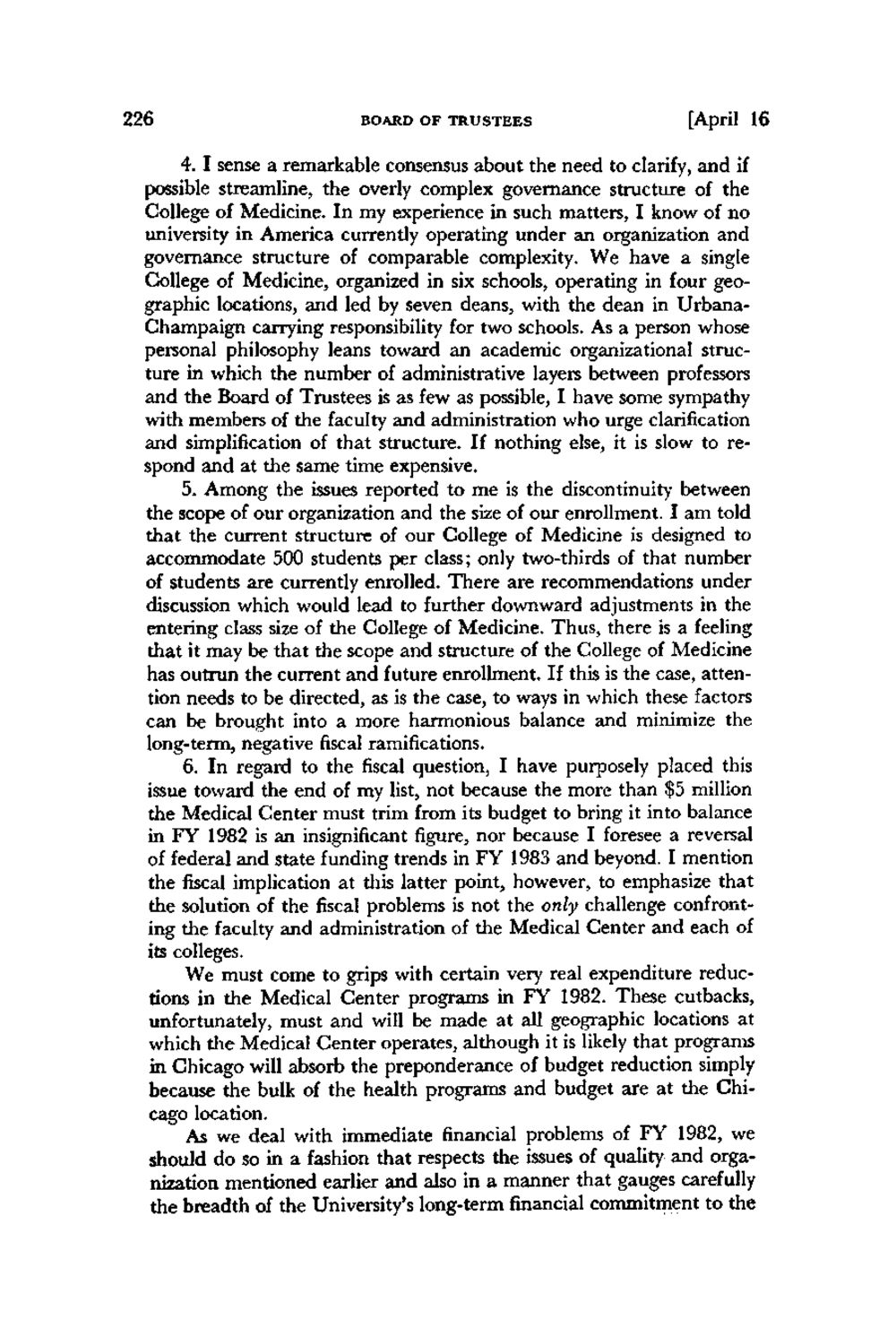| |
| |
Caption: Board of Trustees Minutes - 1982
This is a reduced-resolution page image for fast online browsing.

EXTRACTED TEXT FROM PAGE:
226 BOARD OF TRUSTEES [April 16 4. I sense a remarkable consensus about the need to clarify, and if possible streamline, the overly complex governance structure of the College of Medicine. I n my experience in such matters, I know of no university in America currently operating under an organization and governance structure of comparable complexity. We have a single College of Medicine, organized in six schools, operating in four geographic locations, and led by seven deans, with the dean in UrbanaChampaign carrying responsibility for two schools. As a person whose personal philosophy leans toward an academic organizational structure in which the number of administrative layers between professors and the Board of Trustees is as few as possible, I have some sympathy with members of the faculty and administration who urge clarification and simplification of that structure. If nothing else, it is slow to respond and at the same time expensive. 5. Among the issues reported to me is the discontinuity between the scope of our organization and the size of our enrollment. I am told that the current structure of our College of Medicine is designed to accommodate 500 students per class; only two-thirds of that number of students are currently enrolled. There are recommendations under discussion which would lead to further downward adjustments in the entering class size of the College of Medicine. Thus, there is a feeling diat it may be that the scope and structure of the College of Medicine has outrun the current and future enrollment. If this is the case, attention needs to be directed, as is the case, to ways in which these factors can be brought into a more harmonious balance and minimize the long-term, negative fiscal ramifications. 6. In regard to the fiscal question, I have purposely placed this issue toward the end of my list, not because the more than $5 million the Medical Center must trim from its budget to bring it into balance in FY 1982 is an insignificant figure, nor because I foresee a reversal of federal and state funding trends in FY 1983 and beyond. I mention the fiscal implication at this latter point, however, to emphasize that the solution of the fiscal problems is not the only challenge confronting the faculty and administration of the Medical Center and each of its colleges. We must come to grips with certain very real expenditure reductions in the Medical Center programs in FY 1982. These cutbacks, unfortunately, must and will be made at all geographic locations at which the Medical Center operates, although it is likely that programs in Chicago will absorb the preponderance of budget reduction simply because the bulk of the health programs and budget are at the Chicago location. As we deal with immediate financial problems of FY 1982, we should do so in a fashion that respects the issues of quality and organization mentioned earlier and also in a manner that gauges carefully the breadth of the University's long-term financial commitment to the
| |